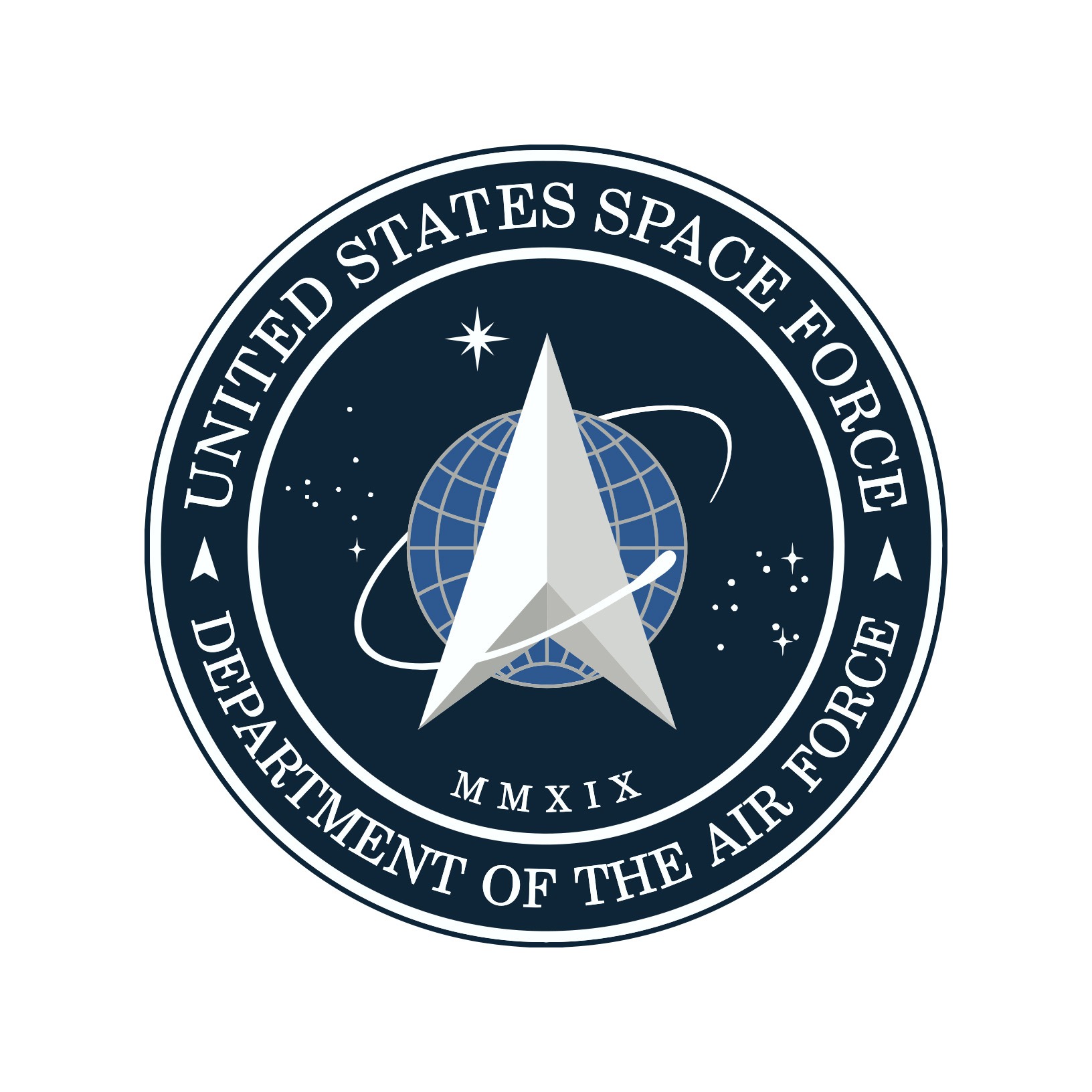President Trump has signed the National Defense Authorization Act for 2020 that establishes a United States Space Force as the sixth branch of the U.S. armed forces—in defiance of the multilateral Outer Space Treaty that, since 1967, has designated space as a global commons to be used for peaceful purposes.
Flanked by top defense and military officials at a signing ceremony on December 20 held at Joint Base Andrews, Maryland, Trump was quoted by Space News saying: “Today marks a landmark achievement as we officially inaugurate the newest branch of our military, the U.S. Space Force. This is a very big and important moment.”
The Space News article also quoted U.S. Secretary of Defense Mark Esper at the signing: “Our reliance on space-based capabilities has grown dramatically and today outer space has evolved into a warfighting domain of its own. Maintaining American dominance in that domain is now the mission of the United States Space Force.”
Bruce Gagnon, coordinator of the Global Network Against Weapons and Nuclear Power in Space, reacted to the establishment of the new military branch with alarm. “The words ‘warfighting domain’ and U.S. ‘dominance in space’ indicate that the Pentagon is actively planning to fight a war in space. This misguided notion is probably the most dangerous and frightening development of my lifetime—and I had thought the Cold War era was bad. The idea that the U.S. thinks it can fight and ‘win’ a war in space is indeed the height of insanity.
“That the U.S. Congress has joined with the Trump administration “to push forward with this notion of ‘maximum U.S. exceptionalism’ indicates just how much the aerospace industry has taken control of Washington,” Gagnon continued.
“It is clear to me that what the Pentagon has long called ‘the largest, and most expensive, industrial project in human history—Star Wars,’ will drive our nation’s economy over the cliff,” said the Maine-based organizer. “There will be rockets and weapons in space and more homeless across the nation than anyone could ever imagine. Yes, we should call it Pyramids to the Heavens. The aerospace industry is the contemporary version of the pharaohs of Egypt, and the taxpayers will be the slaves. But everything has an Achilles’ heel, and the enormous cost of Star Wars could just be it.”
Gagnon concluded: “It’s more than the right time for the public to declare a resounding ‘NO.’”
The formation of a U.S. Space Force and the U.S. drive for “American dominance” of space will inevitably turn space into a war zone because other nations, China and Russia and then more, will respond in kind. Without congressional restraint, there will be an arms race in space.
The landmark Outer Space Treaty of 1967 was put together by the United States, the former Soviet Union, and the U.K. and has since been signed by most nations on Earth. The treaty was spurred, noted Craig Eisendrath, a U.S. State Department officer involved in its creation, by the Soviet Union’s launch of Sputnik, the first space satellite. In the documentary Star Wars Returns, Eisendrath recalls, “We sought to deweaponize space before it got weaponized . . . to keep war out of space.”
The Outer Space Treaty prohibits the placement of weapons of mass destruction in space, and although the Trump administration and U.S. military have been claiming a Space Force is necessary because Russia and China have moved into space militarily, in fact Russia and China—and U.S. neighbor Canada—have been leaders for decades in pushing for an expansion of the Outer Space Treaty. They have been advocating the Prevention of an Arms Race in Outer Space treaty that would bar the placement of any weapons in space. The U.S.—under both Republican and Democratic presidential administrations—has opposed the PAROS treaty and has effectively vetoed it at the United Nations.
The Space News article also quoted Air Force Secretary Barbara Barrett at the signing ceremony: “Today is an historic moment for our nation as we launch the United States Space Force. The Space Force is the first new military service created since 1947, when the Air Force was born from the U.S. Army Air Corps.”
According to Space News, the Space Force authorization marks a huge political victory for Trump. The space industry trade journal reported that Trump “started championing the idea of a space service in early 2018 and directed the Pentagon in June 2018 to figure out a plan to make it happen.” Secretary Barrett is also quoted as saying, “The President’s vision has become a reality with overwhelming bipartisan and bicameral support from Congress.”
In a subsequent article, Space News reported that with the establishment of a U.S. Space Force, there is a plan to rename U.S. Air Force bases as U.S. Space Force bases: “Air Force installations that primarily do space work would be renamed Space Force bases. Peterson Air Force Base in Colorado Springs, for example, could become Peterson Space Force Base. Other candidates for re-designation include Colorado-based Schriever Air Force Base and Buckley Air Force Base, Patrick Air Force Base in Florida and Vandenberg Air Force Base in California.” General John “Jay” Raymond, who has been commander of the U.S. Space Command and is now the commander of the new U.S. Space Force, is quoted confirming the existence of the renaming plan.
Meanwhile, the U.S. military immediately unveiled an “official” U.S. Space Force website at www.spaceforce.mil.
In the U.S. House of Representatives, the vote for the National Defense Authorization Act, on December 11, 2019, was 377 to 48. Some 189 Republicans and 188 Democrats voted for it. Six Republican House members voted no, along with 41 Democrats and one independent. The vote was reported to be a result of a trade-off for 12 weeks of paid parental leave for civilian federal employees. The New York Times article on the vote said that Jared Kushner, Trump’s son-in-law and adviser, played a pivotal role. “It was Mr. Kushner who helped broker a deal to create the Space Force, one of the president’s chief priorities, in exchange for the paid parental leave, a measure championed by his wife, Ivanka Trump, also a senior advisor to the president,” the Times reported on December 11.
The vote in the U.S. Senate on December 17 was 86 to 8. Some 48 Republicans and 37 Democrats and one independent voted for it. Four Republicans and four Democrats voted no.
Trump tweeted after the House vote: “Wow! All our priorities have made it into the final NDAA: Pay Raises for our Troops, Rebuilding our Military, Paid Parental Leave, Border Security, and Space Force!”
The Space News article continued: “Getting Congress to go along with the Space Force authorization took significant cajoling from the White House.” The House Armed Services Committee “unsuccessfully tried to pass a bill in the 2018 NDAA to establish a Space Corps. The Pentagon, the Air Force and the Senate at the time were adamantly opposed but all came around after Trump took up the cause.”
“To get Democrats to vote for the NDAA,” Space News said, “Trump went along with one of their top priorities to grant federal workers 12 weeks of paid time off after the birth or adoption of a child or to handle family health emergencies.”
It was a trade-off of the most profound historic proportions: paid parental leave for government employees, common in countries all over the world, for a measure that would turn space into the next war zone.
Effective as of December 2019, reported Space News, “as many as 16,000 military and civilian personnel from Air Force Space Command will be assigned to the U.S. Space Force. . . . Air Force Gen. John “Jay” Raymond, the commander of U.S. Space Command, will serve as the first Chief of Space Operations . . . chief of staff of the Space Force” and “become a member of the Joint Chiefs of Staff by December 2020.
The Office of the Chief of Space Operations—aka the Space Force headquarters—will be stood up at the Pentagon over the next 60 days.”
Further, there will be “a new Senate-confirmed position of assistant secretary of the Air Force for space acquisition and integration” and a “Space Force Acquisition Council. . . . The space acquisition executive will oversee the Space and Missile Systems Center (SMC), the Space Rapid Capabilities Office and the Space Development Agency.”
Space News said General Raymond told reporters on December 20 that the establishment of a Space Force “truly launches us into a new era.” He cautioned, however, that “thousands of actions will have to take place” over the coming months and years.
“The uniforms, the patch, the song, the culture of a service, that work will continue,” Raymond said. “We’re not going to be in a rush. That’s not something that we’re going to roll out on day one.
Communicating to the public the importance of the Space Force to national security will be a priority.”
Space News indicated Raymond is aware that the Space Force is mocked and called a ‘Space Farce,’ and he thinks that is a problem. “This is not a ‘farce,’” Raymond says. “This is nationally critical.”
The industry journal also posed the question: “Will there be spacemen?”
How the members of the Space Force will be designated will be debated for some time before the service settles on a name. For now, the new branch will be formed with airmen assigned to serve under the Space Force. A new name will be given to members of the Space Force eventually. “We want to develop our own identity,” a senior official said. “We don’t want to say on day one ‘they’re going to be called x.’” Eventually, airmen will be asked to permanently transfer to the Space Force. The estimated 16,000 people who will be expected to transfer include 3,400 officers, 6,200 enlisted personnel and the rest civilians.
“Graduates of the military academies of the other services will be allowed to commission into the Space Force,” Space News reported. “The actual transfer of airmen to the Space Force will be a laborious process that will require standing up a new personnel and compensation system. Each airman individually will have to volunteer to be separated from the Air Force. Officers would have to be reappointed, and enlisted personnel would have to be re-enlisted to serve under the Space Force.”
“The Army is of special importance because it has a large cadre of space operators and experts estimated at more than 2,000 people,” the Space News article added. “Barrett said the plan is to eventually bring them on. ‘Naturally the Amy and Navy will be partners,’ she said. ‘Over time they will be fully engaged.’ She said Army and Navy officials have been involved in the planning and rollout of the Space Force. Barrett also wants to figure out a plan for National Guard and Reserve units to serve on the Space Force.”
As to how much money the Space Force will have—what Bruce Gagnon of the Global Network calls the Achilles’ heel of the scheme—Space News said “Congress approved $40 million for Space Force operations and maintenance in the fiscal year 2020 appropriations. That is less than the $72.4 million requested by the Trump administration, although Barrett said Dec. 20 that the funding would be enough to get started. . . . In a Dec. 2 memo, a copy of which was obtained by SpaceNews,” the article went on, “Barrett requested the following transfers to the Space Force for fiscal year 2020: $9.3 billion from Air Force space related weapons systems and operations, $1.4 billion from weapons system sustainment, $275 million from major command support, $26.3 million from education and training, $95 million from headquarters spending. Barrett said the personnel costs associated with all these programs also will transfer to the Space Force.”
National Public Radio has reported that Trump’s advocacy of a Space Force “started as a joke.” In August, NPR’s Claudia Grisales related: “Early last year President Trump riffed on an idea he called ‘Space Force’ before a crowd of Marines in San Diego. It drew laughs, but the moment was a breakthrough for a plan that had languished for nearly 20 years.” She continued: “‘I said maybe we need a new force, we’ll call it the Space Force,’ Trump said at Marine Corps Air Station Miramar in March 2018. ‘And I was not really serious. Then I said, ‘What a great idea, maybe we’ll have to do that.’”
Bruce Gagnon recounts a protest he organized against the weaponization of space at the Kennedy Space Center in Florida in 1989. Apollo astronaut Edgar Mitchell, the sixth man to walk on the moon, was a participant in the event, and he told those present that
any war in space would be the one and only. By destroying satellites in space, massive amounts of space debris would be created that would cause a cascading effect and even the billion-dollar International Space Station would likely be broken into tiny bits.
So much space junk would be created, Mitchell told us, that we’d never be able to get a rocket off the planet again because of the mine field of debris orbiting the Earth at 15,000 mph. That would mean activity on Earth below would immediately shut down. Cell phones, ATM machines, cable TV, traffic lights, weather prediction and more—all hooked up to satellites—would be lost. Modern society would go dark.
As to what weapons a Space Force might develop, it’s instructive to recall the proposals for Reagan’s “Star Wars” program, which included hypervelocity guns, particle beams, and laser weapons on board orbiting battle platforms, with onboard nuclear reactors or “super” plutonium systems providing the power for the advanced armaments. General James Abramson, head of Star Wars, or the Strategic Defense Initiative as it was officially termed, said at a Symposium on Space Nuclear Power and Propulsion in Albuquerque, New Mexico, in 1988 that “without reactors in orbit” there would need to be “a long” extension cord bringing up power from Earth.
That the Trump administration would attempt to revive a ridiculed Reagan-era initiative comes as no surprise. Nor, frankly, is it especially shocking that Congress would provide modest bipartisan support for the rekindling of the project, something it did with regularity during earlier incarnations. What is concerning is that this Congress has displayed little or no inclination to act as a check on similarly preposterous Trump administration policies, from malevolent immigration programs to disingenuous tax schemes to rogue initiatives that are openly hostile to environmental protection and planetary survival. In an era when political farce regularly mutates into reality, the prospects for the Space Force should not be discounted.
Karl Grossman is author of the book Weapons in Space and writer and narrator of the TV documentary Nukes in Space: The Nuclearization and Weaponization of the Heavens (EnviroVideo). He is a professor of journalism at the State University of New York College at Old Westbury.







0 Comments